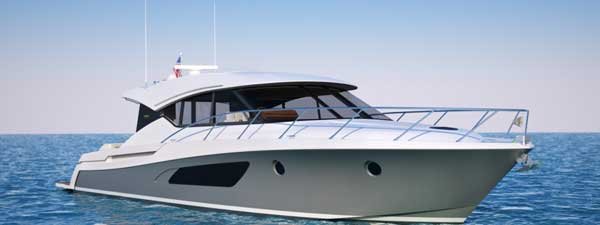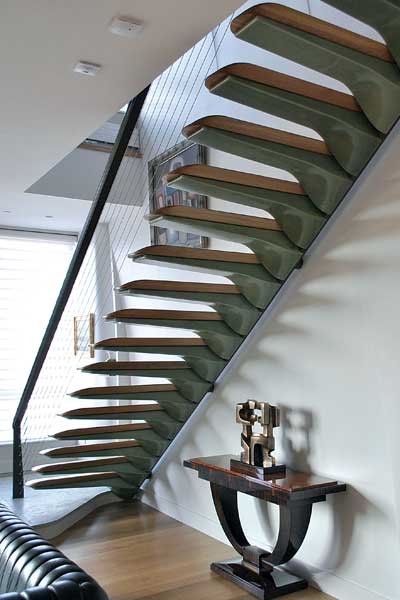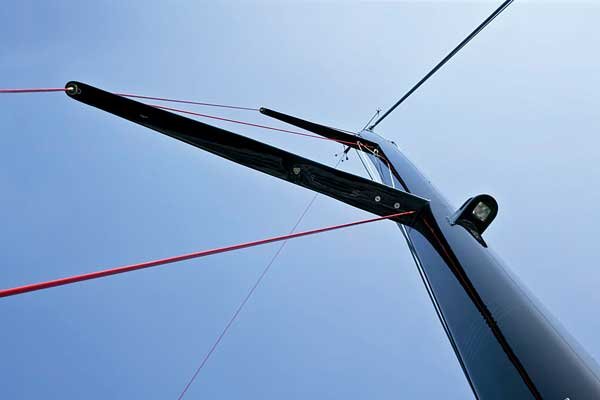Advertisement

The recreational marine industry has branched out into other areas. S2 Yachts, which makes Tiara and Pursuit boats, have provided police boats to faraway places.
Back in 1932 when George Blaisdell founded the Zippo Manufacturing lighter company to sell a line of windproof lighters that were popular with the military, he probably couldn't have envisioned a time when people didn't smoke. Fast forward several decades, when health concerns and legislation were taking a big bite out of Zippo's revenues. They diversified and soon were selling lighters for fireplaces and grills, designer pens, watches, handbags, and accessories.
David McConnell was a door-to-door book salesman who got more women's attention by offering perfume samples. Soon the perfume was outselling the books, and Avon was born. Global giant 3M was a mining company known as Minnesota Mining & Manufacturing before selling sandpaper and Scotch tape as a sideline. Today they market over 55,000 different products including car-care solutions and touchscreens. And Tiffany & Company started out as a stationer before switching to jewelry.

A tidal turbine being brought to its new home.
Marine companies are no exception to evolution. When the economic downturn hit five years ago, many realized they had to adapt to survive. Some had already been on a path to diversification and fared better when the marine industry stalled. Several fast, outboard-driven boatbuilders have tailored designs to government and paramilitary users. Parker Boats builds for police and natural resources departments; Fountain Powerboats has worked with the Drug Enforcement Agency; Boston Whaler provides vessels for numerous arms of the government.
David Glenn, marketing director at S2 Yachts, which builds Pursuit and Tiara, says they've provided police boats to places such as Lake Victoria in Uganda, and will work with agencies so long as there is a reasonable amount of customization required, beyond which it's not profitable. "Our reach beyond recreational marine started before the recession with strategic planning in 2006. We've built products for wind energy and other markets. Today, about 20 percent of our business is in non-marine applications." Building boats for state, federal, and municipal agencies has helped them during the downtimes, especially in keeping a valued and skilled labor force employed so they'd still be there when the economy turned around. "We've been building yachts for 60 years, and the majority of our energy is still directed at that market," he says. "But anytime you can build a quality product and keep talented workers employed through rough times, well, that's a win."

A vertical wind turbine
Eric Goetz's company, Goetz Boats in Bristol, Rhode Island, has been through the wars, including receivership. Goetz Composites was formed to serve diversified markets using skills in engineering, lamination, fabrication, and installation that came out of their marine experience. Chase Hogoboom, company president, estimates that over half of their business now comes from non-marine sources, including custom cupolas and a wind vane for the Staten Island Children's Museum and a suspended library that hangs in the headquarters of the American Yazaki Corporation. They also restored the 24-foot Buckminster Fuller Fly's Eye Dome, now installed at MGM Macau and filled with butterflies. "We thought it was funny that a product made here was shipping to China," says Hogoboom, "so we slapped 'Made in the USA' stickers all over it."

Cantilevered composite staircase.
The Composite Revolution
Marine-component companies have been taking some of the greatest leaps in diversifying their businesses. Notable examples are composites companies, which have successfully transferred equipment, skill sets, and technological know-how to other industries, including aerospace, military, medical, musical, architectural, transportation, and wind energy. Composites are replacing structures previously made of aluminum or steel because they're just as strong but lighter and made to very tight tolerances.
Hall Spars & Rigging in Rhode Island builds masts for racing and production sailboats, including supplying carbon compression tubes to various America's Cup teams. But in recent years they've added some interesting products to their portfolio, including a turbine that generates electricity via tidal movement and an arm mounted on military trucks that picks up land mines. "We built the lightweight composite cross atop the tabernacle in Martha's Vineyard because the cupola wouldn't support the weight of metal," says Hall business development manager, Pete Levesque. "We've also built satellite dishes and components for James Cameron's DeepSea Challenge, a one-man submersible in which he descended to 6.8 miles below the ocean's surface." Hall has also produced aerospace products, including one for a project dubbed "Spars for Mars."

How it all began: A Hall Spars traditional marine mast. (Photo: Hall Spars)
Catching The Wind
The growing markets of wind energy have also been a viable market for composite companies. VEC Composites, a vacuum-bagged composites manufacturer based in Greenville, Pennsylvania, used to make boats but now also manufactures truck parts and containers like stackable housing modules — complete with kitchen, shower, latrine, and laundry — designed for the military.

This composite solar arch doubles as a car park canopy.
Matt Dunham of Clear Carbon and Components (C3) opened his marine business in 1995 but a decade ago realized that to grow, he needed to leverage his abilities in other industries. Today, C3 is in the medical, defense, architectural, and music markets. They've developed vertical-axis wind turbines and a solar arch that makes energy while providing shade for cars in a corporate parking lot; built military communications buoys; created head restraints for CT scanners; fabricated stand-up paddleboards for surfer Laird Hamilton; and even a cello for Yo-Yo Ma
Many of the U.S. composites companies are headquartered in Bristol, Rhode Island, which is becoming the de facto composites capital. Wendy Mackie of the Rhode Island Marine Trades Association recognizes the concentration of expertise in the area. "They're all practically across the street from one another, but they make all sorts of different products," she says, and adds that the focus on composites technology is so popular that the International Yacht Restoration School (IYRS) in Rhode Island has added a six-month program dedicated to working with the various materials. It's a trend Matt Dunham would agree with: "I've been through three down cycles in the marine industry, and knew early on that we had to expand our focus to grow. We started running like a manufacturing company focused on highly repeatable products, rather than just as a custom boatbuilder."

Musician Yo-Yo Ma and his composite cello.
